
The Philippine Scouts (Filipino: Maghahanap ng Pilipinas/Hukbong Maghahanap ng Pilipinas) was a military organization of the United States Army from 1901 until after the end of World War II. These troops were generally Filipinos and Filipino-Americans assigned to the United States Army Philippine Department, under the command of American commissioned officers (though a handful of Filipino Americans received commissions from the United States Military Academy). Philippine Scout units were given the suffix "(PS)", to distinguish them from other U.S. Army units.
This article presents a timeline of Philippine political history focused on governmental transitions of the Philippine archipelago, major polities, invasion attempts, and insurgency movements from the pre-Hispanic period to the present. The information presented here is highly summarized, and more complete information can be found in more detailed articles linked below.
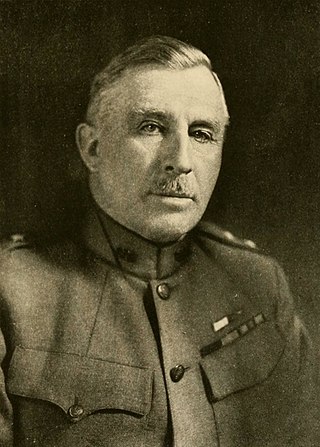
Leonard Wood was a United States Army major general, physician, and public official. He served as the Chief of Staff of the United States Army, Military Governor of Cuba, and Governor-General of the Philippines. He began his military career as an army doctor on the frontier, where he received the Medal of Honor. During the Spanish–American War, he commanded the Rough Riders, with Theodore Roosevelt as his second-in-command. Wood was bypassed for a major command in World War I, but then became a prominent Republican Party leader and a leading candidate for the 1920 presidential nomination.

John Leonard Hines was an American general who served as Chief of Staff of the United States Army from 1924 to 1926.
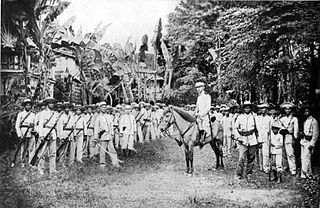
The Battle of Tirad Pass, sometimes referred to as the "Philippine Thermopylae", took place during the Philippine–American War on December 2, 1899, in northern Luzon in the Philippines. A 60-man Filipino rear guard commanded by Brigadier General Gregorio del Pilar succumbed to more than 500 Americans, mostly of the 33rd Volunteer Infantry Regiment under Major Peyton C. March, while delaying the American advance to ensure that President Emilio Aguinaldo and his troops escaped.
The governor-general of the Philippines was the title of the government executive during the colonial period of the Philippines, governed by Mexico City and Madrid (1565–1898) and the United States (1898–1946), and briefly by Great Britain (1762–1764) and Japan (1942–1945). They were also the representative of the executive of the ruling power.
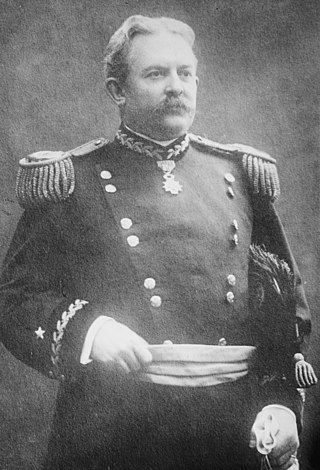
James Franklin Bell was an officer in the United States Army who served as Chief of Staff of the United States Army from 1906 to 1910.

Vicente Lukbán y Rilles or Vicente Lucbán Rilles was a Philippine General in the Philippine Republican Army and politician who served as Governor of Tayabas from 1912 to 1916.
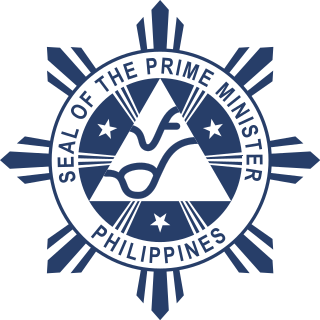
The prime minister of the Philippines was the official designation of the head of the government of the Philippines from 1978 until the People Power Revolution in 1986. During martial law and the fourth republic, the prime minister served as the head the Armed Forces of the Philippines. A limited version of this office, officially known as the President of the Council of Government, existed temporarily in 1899 during the First Philippine Republic.
The Philippine–American War, also known as the Philippine War of Independence or the Philippine Insurrection (1899–1902), was an armed conflict between Filipino revolutionaries and the government of the United States which arose from the struggle of the First Philippine Republic to gain independence following the Philippines being acquired by the United States from Spain. This article lists significant events from before, during, and after that war, with links to other articles containing more detail.

The timeline of events of the Spanish–American War covers major events leading up to, during, and concluding the Spanish–American War, a ten-week conflict in 1898 between Spain and the United States of America.

The Philippine Republic, now officially remembered as the First Philippine Republic and also referred to by historians as the Malolos Republic, was established in Malolos, Bulacan during the Philippine Revolution against the Spanish Empire (1896–1898) and the Spanish–American War between Spain and the United States (1898) through the promulgation of the Malolos Constitution on January 23, 1899, succeeding the Revolutionary Government of the Philippines. It was formally established with Emilio Aguinaldo as president. It maintained governance until April 19, 1901. Following the American victory at the Battle of Manila Bay, Aguinaldo returned to the Philippines, issued the Philippine Declaration of Independence on June 12, 1898, and proclaimed successive revolutionary Philippine governments on June 18 and 23 of that year.
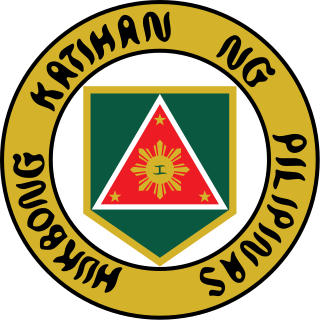
The Philippine Army (PA) is the main, oldest and largest branch of the Armed Forces of the Philippines (AFP), responsible for ground warfare and as of 2021 had an estimated strength of 143,100 soldiers The service branch was established on December 21, 1935, as the Philippine Commonwealth Army. The Philippine Army has engaged in many conflicts including the ongoing Communist rebellion in the Philippines, the Moro conflict and, alongside other national military forces, in conflicts of international scope.

The Pact of Biak-na-Bato, signed on December 14, 1897, created a truce between Spanish colonial Governor-General Fernando Primo de Rivera and the revolutionary leader Emilio Aguinaldo to end the Philippine Revolution. Aguinaldo and his fellow revolutionaries were given amnesty and monetary indemnity by the Spanish Government, in return for which the revolutionary government would go into exile in Hong Kong. Aguinaldo had decided to use the money to purchase advance firearms and ammunition later on return to the archipelago.

The Political Constitution of 1899, informally known as the Malolos Constitution, was the constitution of the First Philippine Republic. It was written by Felipe Calderón y Roca and Felipe Buencamino as an alternative to a pair of proposals to the Malolos Congress by Apolinario Mabini and Pedro Paterno. After a lengthy debate in the latter part of 1898, it was promulgated on January 21, 1899.
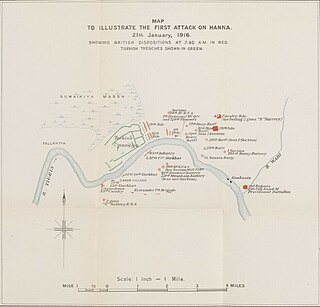
The First Battle of Hanna was a World War I battle fought on the Mesopotamian front on 21 January 1916 between Ottoman Army and Anglo-Indian forces.

The Insular Government of the Philippine Islands was an unincorporated territory of the United States that was established in 1902 and was reorganized in 1935 in preparation for later independence. The Insular Government was preceded by the United States Military Government of the Philippine Islands and was followed by the Commonwealth of the Philippines.
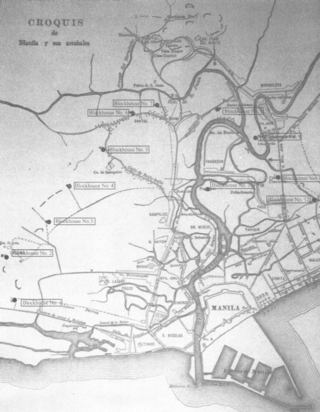
The Zapote Line was a defensive system built by the Spanish colonial government during the period of the Spanish–American War. It was a complex of blockhouses and military trenches from Fort San Antonio Abad to the Zapote River.
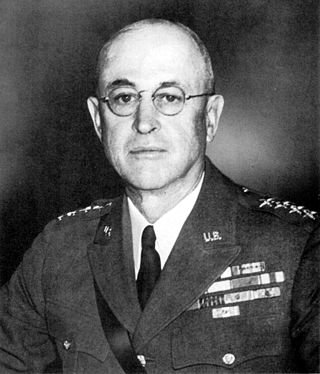
Malin Craig was a general in the United States Army who served as the 14th Chief of Staff of the United States Army from 1935 to 1939. He served in World War I and was recalled to active duty during World War II He played a large role in preparing the U.S. Army for World War II.

















